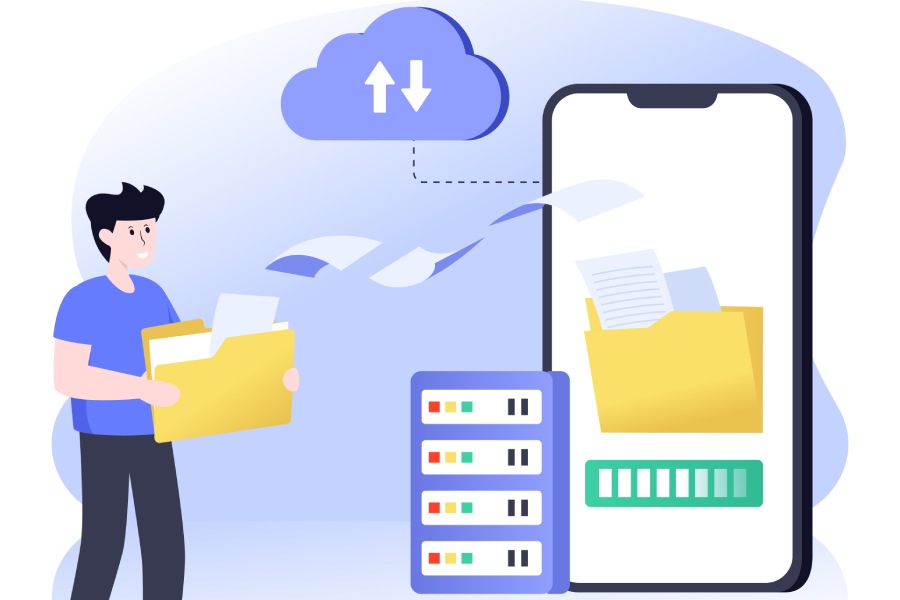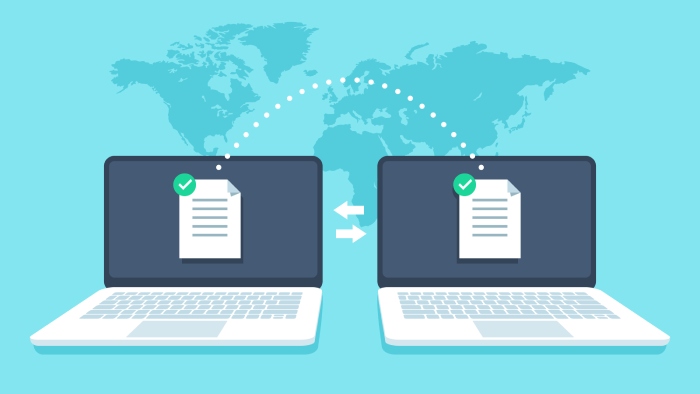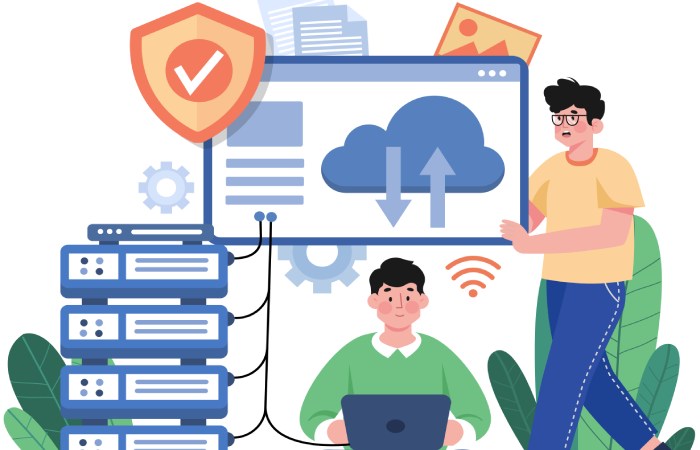Cross-tenant migration might sound like just a technical hurdle, but it’s essentially about weaving together the digital lives of people in different organizations. Imagine being part of a company merger—suddenly, not only are you expected to collaborate with new colleagues, but your emails, files, and applications need to change homes and still work seamlessly.
It can feel overwhelming, but with careful planning, solid tools, and clear communication, this daunting task can become a smooth journey. I’ve seen firsthand how prior preparation and attention to detail can make all the difference in helping teams embrace these changes with confidence. So, let’s dive into the essential steps for a successful cross-tenant migration in Office 365 to help ease your transition!
Cross-tenant migration in Office 365 refers to the process of transferring data and user accounts between different tenant instances, often necessary during organizational changes such as mergers or acquisitions. To accomplish this, administrators can utilize Microsoft tools like Exchange Online PowerShell and Migration Batch Services, while ensuring all prerequisites such as proper licensing and mailbox conditions are met for a seamless transition.
Preparing for Migration
The first step in ensuring a successful cross-tenant migration involves thoroughly assessing your current Office 365 environment. This assessment isn’t just a checkbox exercise; it’s about gathering essential information that will drive the entire process. You’ll want to document key components such as user mailboxes, shared mailboxes, distribution groups, OneDrive content, and SharePoint sites. Each of these elements plays a vital role in the migration, so having accurate records will help avoid unnecessary complications later on.
Following that, it’s wise to clean up unnecessary data. Think of it as decluttering your digital space—removing outdated or irrelevant files can significantly streamline the migration process. For instance, archived emails older than five years might no longer be necessary and can take up valuable resources if migrated unnecessarily.
By clearing out this clutter, you’re not only making the transition smoother but also enhancing overall efficiency in your new environment.
Next comes determining the migration scope, which is critical for effective planning. You need to decide whether the migration will involve just individual user data or encompass the entire organization’s information. Consider what aspects need to be migrated as well: emails, documents, user settings—all these elements require thoughtful consideration to ensure nothing important is left behind.
With a clear understanding of what needs to be moved, you should now develop a robust communication plan. This plan ensures that all employees are aware of the migration timeline and understand what to expect during this period of change. Transparent communication can greatly assist in managing expectations and minimizing downtime. According to research by TechRepublic, around 75% of IT leaders strongly agree that clear communication is essential for successful migrations.
Effective planning and communication pave the way for addressing security and compliance matters with confidence down the line.
Once you’ve outlined your environment and established a plan, you’ll be well-equipped to tackle any potential challenges head-on during the actual migration process. As you’re preparing for these critical steps, let’s consider how security and compliance will play pivotal roles in safeguarding your organization during this transition.
Reviewing Security and Compliance
Security and compliance are not just afterthoughts—they should be front and center in your cross-tenant migration strategy. When you think about the vast amounts of sensitive data flowing between tenants, mishandling that information can lead to catastrophic outcomes, including massive financial penalties or reputational damage. It’s like planning a road trip without checking your fuel gauge; you’ll find yourself stranded if you’re not prepared. Thus, ensuring that your data remains intact and secure throughout the migration process is non-negotiable.
Step I – Update Security Policies
The first step in this crucial stage is to review and update your organization’s security policies tailored specifically for migration events, recognizing that temporary vulnerabilities can arise when transferring data between environments. This means revisiting policies surrounding access controls, data handling, and incident response protocols.
It’s also vital to ensure that Multi-Factor Authentication (MFA) is enabled for all accounts involved in the migration. MFA acts as an additional barrier against unauthorized access, requiring something you know (like a password) and something you have (like a mobile device). When I worked on a large-scale migration project, implementing MFA made a stark difference in reducing access risks significantly.
Step II – Compliance Check
Moving on to compliance, it’s crucial to perform a thorough compliance check against relevant industry regulations. You must ensure adherence to standards such as the General Data Protection Regulation (GDPR), Health Insurance Portability and Accountability Act (HIPAA), or Sarbanes-Oxley (SOX), depending on your organization’s specifics.
For instance, GDPR mandates stringent data protection measures for handling personal data of EU citizens—failing to comply could lead to fines of up to 4% of annual global revenue! Implementing checks at this stage affirms that your procedures adhere to legal expectations while safeguarding your customers’ trust.
Step III – Secure Data Transfers
To culminate your efforts in this area, focus on secure data transfers. Employing encrypted methods for transferring data safeguards against interception by unauthorized parties. Think about it: transmitting data without encryption is akin to sending sensitive information through an open field with no guards.
Use protocols like Secure Socket Layer (SSL) or Transport Layer Security (TLS) to ensure that all data exchanged during the migration is encrypted end-to-end. Additionally, consider employing tools designed for secure migrations—which often come equipped with built-in encryption options.
Once security and compliance measures are firmly established and tested, you’re well-prepared to explore specialized solutions that will effectively support your migration goals.
Reviewing security and compliance with DuoCircle involves leveraging DKIM, DMARC, and SPF protocols to enhance email security, prevent spoofing, and ensure regulatory adherence.
Selecting the Right Migration Tools
There are numerous migration solutions available today, and not all tools are created equal.
Among the myriad options, investing in well-regarded migration software stands out as a crucial first step toward ensuring a smooth process. Highly recommended tools such as Quest On Demand Migration, BitTitan’s MigrationWiz, and CodeTwo Office 365 Migration are designed specifically for this kind of task, streamlining what can otherwise become quite complex. For instance, BitTitan’s MigrationWiz touts a user-friendly dashboard that simplifies management, providing comprehensive functionality that makes it easier to track progress during migrations—even if it’s priced around $15 per mailbox.
But selecting the right tool goes beyond just their headline features; you must also conduct a thorough compatibility check. It’s critical to ensure that your chosen solution works with both your source and destination tenants. Some tools might handle simple email migrations effortlessly but struggle when faced with complex data structures like shared calendars or large volumes of files. Checking compatibility not only saves time but minimizes disruption later—when you might wish you had conducted more research up front.
After narrowing down your tool choices based on compatibility, the next logical step is effectively mapping the source data to the destination tenant.
Data Mapping
Data mapping—the process of matching fields from your source tenant to your target tenant—is essential in ensuring all data transitions smoothly without loss or corruption. This phase may include aligning user information like contacts and calendar events, along with migrating emails and documents.
Conducting this mapping meticulously now avoids potential headaches later; misaligned fields can lead to significant data loss or duplication issues.
Additionally, during your mapping stage, keep an eye on specific configurations required by different migration tools. Some tools might require unique settings or adjustments—knowing these details in advance will help you address potential challenges proactively, which ultimately aids in the success of your migration process.
Moreover, it’s wise to consider leveraging third-party migration partners when necessary. While some organizations may prefer handling all aspects themselves, partnering with specialized vendors like Binary Tree, BitTitan, or CodeTwo can provide tailored solutions that cater to specific needs while offering expert assistance throughout the journey. These relationships often improve performance and reliability during migration efforts.
By taking the time to select the right tools and perform careful mapping between both tenants, you’re setting up for a smoother experience that minimizes risk and maximizes the effectiveness of your cross-tenant migration efforts.
With selected tools and data mapping in place, we can now shift our focus towards efficiently organizing your source data for a seamless transition into the new environment.
Mapping the Source to Destination
Efficient mapping from source to destination is foundational to a successful cross-tenant migration, ensuring that no data slips through the cracks. This becomes particularly vital when migrating user accounts and their corresponding data, as any discrepancies can lead to frustrating delays or lost information. The good news is that with careful planning, you can set up a robust mapping strategy that minimizes these risks.
Step I – Mapping User Accounts
To begin with, it’s crucial to translate user accounts accurately between the two tenants. This step guarantees that each user retains access to their emails and documents post-migration.
This involves ensuring usernames and email addresses are correctly matched.
A common pitfall can arise if users have different formats or naming conventions across tenants. It’s important to create a mapping table where you jot down existing usernames in the source tenant alongside corresponding usernames in the destination tenant. This practice eliminates confusion and makes it easier for users to find their migrated accounts. Additionally, setting up temporary forwarding addresses during the transition helps maintain communication without disruption.
Step II – Data Mapping
Next, we enter the world of data mapping, which requires creating a detailed plan that outlines precisely how emails, documents, calendars, and settings will be shifted from one tenant to another.
This stage ensures that everything—down to user preferences—is preserved through migration. One effective method involves utilizing specialized scripts or tools provided by your migration software. These utilities often streamline complex tasks like matching user IDs or transferring permissions automatically.
For instance, using PowerShell scripts can significantly expedite these processes by automating bulk actions such as license assignments or permission adjustments.
But don’t forget crucial details! You should also confirm that shared resources and group memberships are accurately replicated in the new environment. A well-organized migration plan includes all aspects—like distribution lists—which are especially notable when working with larger organizations.
After completing the mapping process, it’s essential to implement additional measures to ensure all features operate smoothly in the new setup. This preparation effectively supports ongoing functionalities as you transition into your next phase.
Verifying Data and Application Functionality
Verifying the migration is as crucial as the migration itself. It serves as a check to ensure that all elements have transitioned seamlessly, and nothing has been lost during the process.
One way to start this evaluation is through data validation. In this step, you’ll want to meticulously compare data—both in the source and destination environments—to confirm consistency. Utilizing auditing tools can make this task easier, allowing you to pinpoint any discrepancies or omissions quickly. For example, checking email counts against both systems can provide immediate insight into whether all correspondence has made it over.
Step I – Data Validation
By focusing on data consistency, you are safeguarding against potential issues that could arise after migration. Look for specific indicators such as user accounts, emails, contacts, and calendar entries to verify they match between the two systems. Moreover, consider running checksum validation on critical files to ensure they remain unchanged during the move. The aim here is to build confidence not just in the integrity of the data but also in your migration process overall.
With your data validated and any inconsistencies addressed, the next phase requires concrete testing of applications that your organization relies on.
Step II – Application Testing
Testing critical applications is vital to ensuring they operate as expected within their new environment. Begin by accessing core applications like SharePoint, Teams, and OneDrive. This ensures that users can send emails, upload files, and manage calendar events efficiently without any hiccups post-migration.
For instance, if you encounter issues when logging into Teams or find that files aren’t accessible in SharePoint, those concerns may need immediate attention before moving forward.
During application testing, it’s helpful to run through common tasks that users will likely perform daily. Ask a small group of users to carry out typical activities such as sending emails or sharing files. Collecting their feedback can provide valuable insights into potential challenges or areas for improvement.
With verification complete, attention must turn to strategies focused on integrating new team members—an essential aspect of fostering engagement and productivity in the wake of organizational changes.
Employee Onboarding and Training
Properly onboarding and training employees can make all the difference when it comes to adapting to a new IT environment following a tenant migration. This isn’t just about handing over new login credentials; it’s about guiding your workforce through the maze of new tools, functionalities, and workflows they’ll encounter. Effective onboarding helps minimize confusion, increases productivity, and ultimately leads to higher employee satisfaction in their roles.
Training Sessions
Training sessions should be designed to familiarize employees with any new features or changes that come with the transition. These can range from formal presentations to interactive workshops that engage participants directly. For instance, one HR manager mentioned that implementing several small, hands-on workshops significantly improved the experience for employees by facilitating more personalized instruction and immediate feedback. It’s vital these sessions are tailored to the specific needs of different teams, considering their unique roles within the organization.
Consider using a blended learning approach—combining online tutorials with in-person sessions—to cater to varied learning styles and schedules. This flexibility could enable employees to review complex concepts at their own pace while still having direct access to support when needed. Incorporating practical exercises related to real-world scenarios will greatly benefit participants in retaining information.
Ongoing Support
Transitioning doesn’t end once training sessions are complete; continued support is essential in solidifying those new skills. Providing ongoing assistance fosters an atmosphere where employees feel empowered to ask questions and seek help without hesitation, thus reducing anxiety around potential technical issues post-migration.
One effective strategy is to allocate a dedicated helpdesk resource for the first few weeks after migration. Think of this as an immediate lifeline for users encountering common issues as they adjust to their new environment. Developing a comprehensive reference guide or FAQ document can address recurring questions and provide step-by-step solutions for tackling common problems.
As an extra measure of support, create regular check-ins where team leads can gather feedback on employee experiences with the new system. This consistent communication loop not only helps identify areas needing improvement but also fosters a collaborative spirit within your organization.
By prioritizing focused training sessions and ongoing support mechanisms, you’re equipping your team with the tools they need to thrive in their new digital landscape.
In summary, a strategic approach to onboarding and continuous support is crucial for ensuring your employees successfully transition into the updated IT environment, enhancing overall organizational effectiveness.


